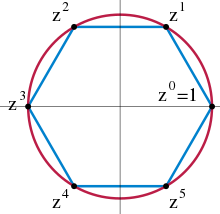5:21 PM
The dead link inf.u-szeged.hu/actacybernetica/edb/vol07n2/pdf/… can be found in the Wayback Machine.
Some other locations can be found through Google Scholar: scholar.google.com/… or scholar.google.com/…
The link math.boisestate.edu/~holmes/holmes/basicfm.pdf now redirects to randall-holmes.github.io - there is a section "NF Consistency Proof".
1 hour later…
6:26 PM
3
For the Gauss circle problem
$$
R(x):=\sum_{0 \leq n \leq x} r_2(n)=\pi x+P(x), P(x)=O(x^{\frac{1}{4}+\epsilon})
$$
Gauss may not know the integral formula of the error term.
$$
\int_0^X P(x) d x =O( X^{1+1 / 4})
$$
Assuming he really doesn't know, how does he make the guess of the exponent $\fra...

In mathematics, the Gauss circle problem is the problem of determining how many integer lattice points there are in a circle centered at the origin and with radius
r
{\displaystyle r}
. This number is approximated by the area of the circle, so the real problem is to accurately bound the error term describing how the number of points differs from the area.
The first progress on a solution was made by Carl Friedrich Gauss, hence its name.
== The problem ==
Consider a circle in
R...
0
Sorry for a naive question:
$\qquad$ are there any non-identity idempotent automorphims of simple groups?
(There are no in the case of $\ Z_{\!p}\,$).
Terminology: Automorphism $\ A\ $ is idempotent $\ \Leftarrow:\Rightarrow\ A\circ A= A.$

In mathematics, a simple group is a nontrivial group whose only normal subgroups are the trivial group and the group itself. A group that is not simple can be broken into two smaller groups, namely a nontrivial normal subgroup and the corresponding quotient group. This process can be repeated, and for finite groups one eventually arrives at uniquely determined simple groups, by the Jordan–Hölder theorem.
The complete classification of finite simple groups, completed in 2004, is a major milestone in the history of mathematics.
== Examples ==
=== Finite simple groups ===
The cyclic group G = (Z/3Z...
« first day (3453 days earlier) ← previous day next day → last day (455 days later) »
Transcript for
Feb3
Feb '234
Feb5
 MO editors' lounge
MO editors' lounge
Talk related to editing, tagging and related matters for the s...
